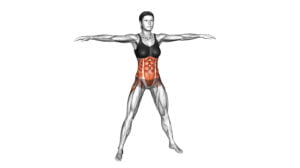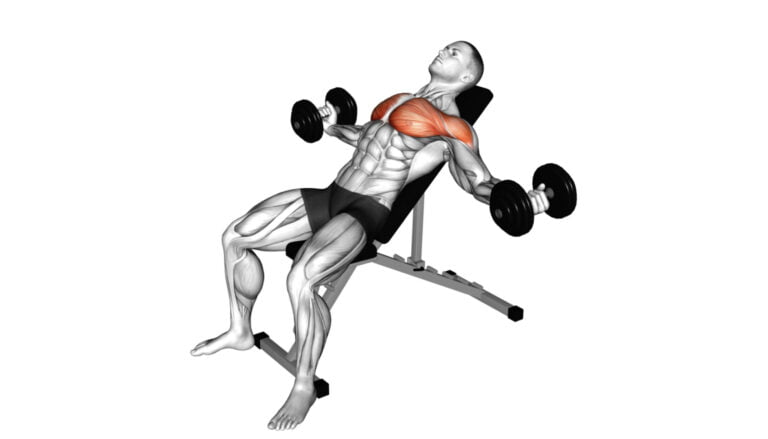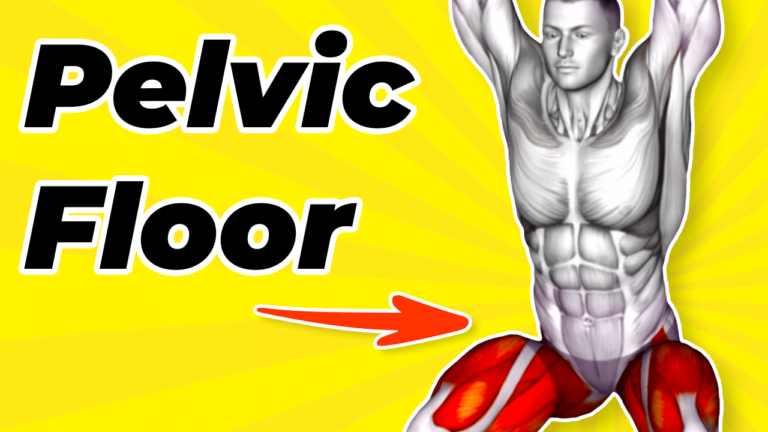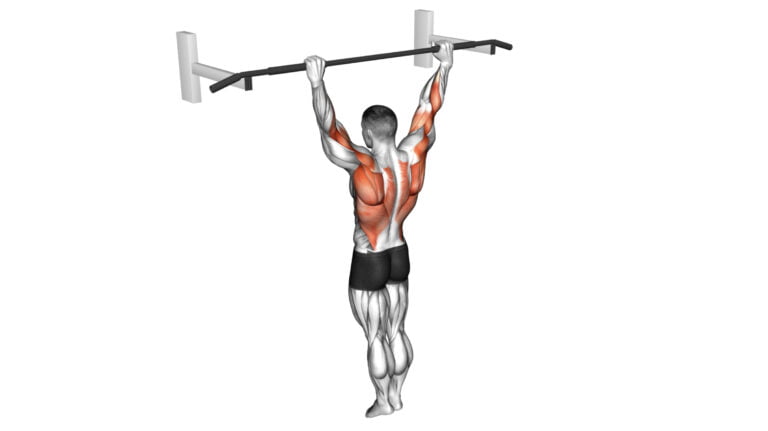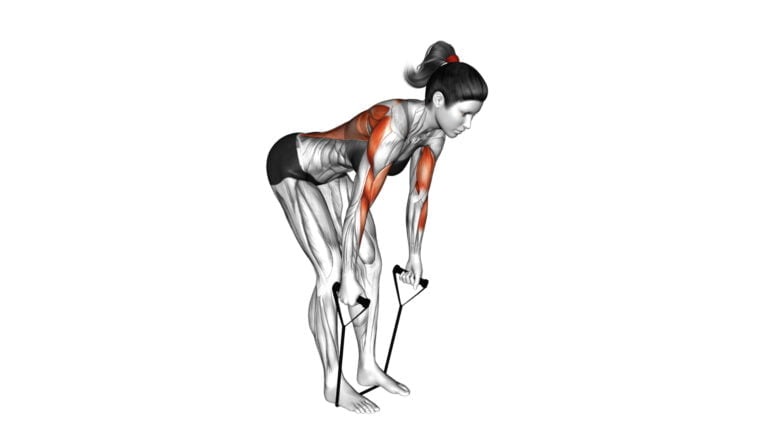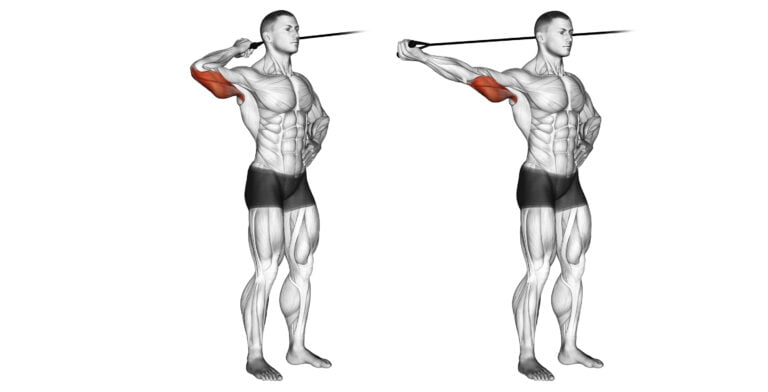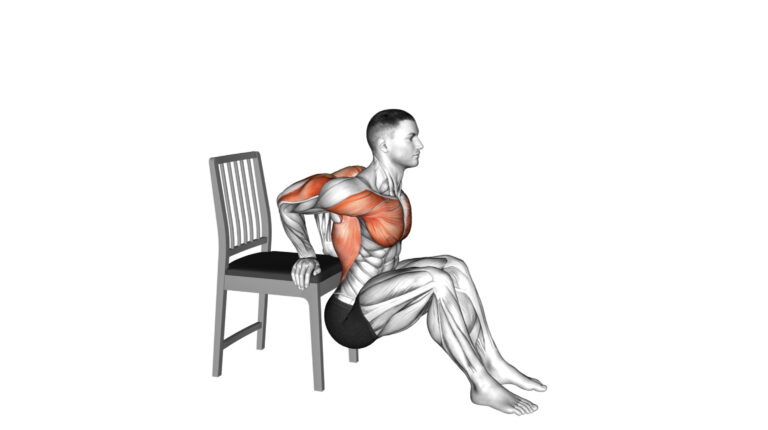7 Exercises To Do Everyday At Home – Get Fit Fast!
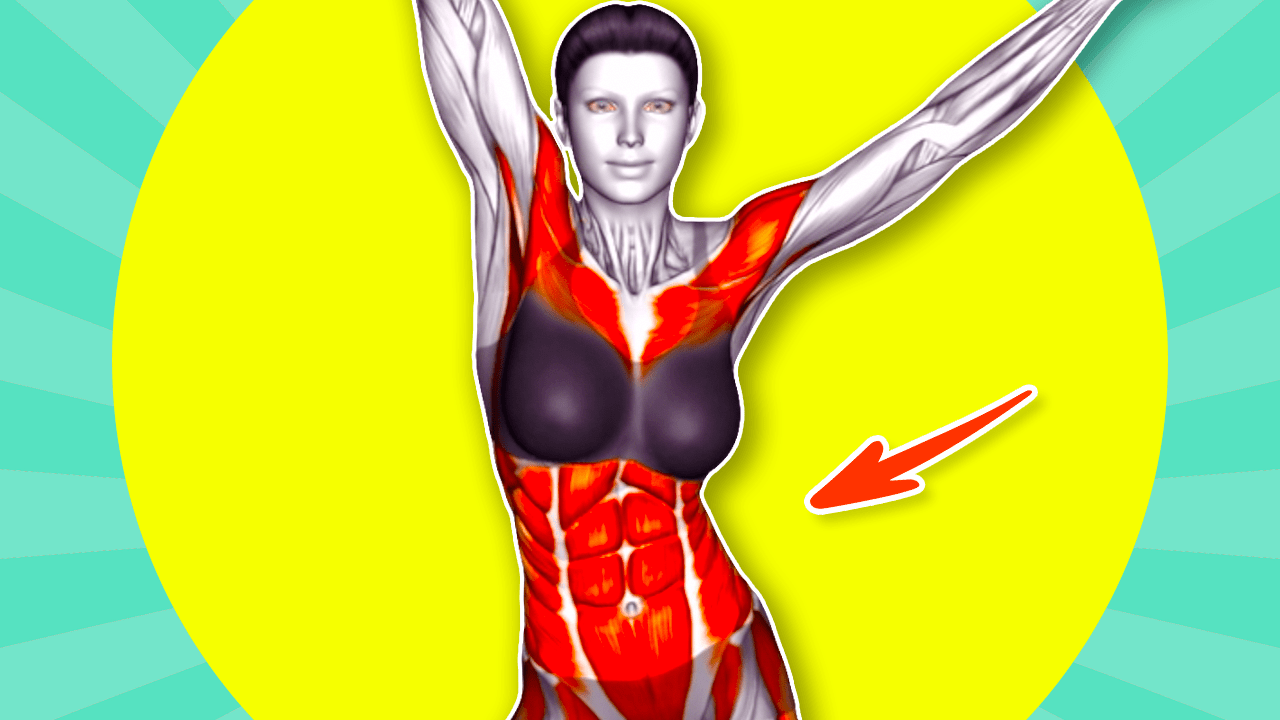
Watch The Video To See These 7 Exercises To Do Everyday At Home
Creating a workout routine that fits into our busy lives can often feel like a puzzle with too many pieces. Despite the common belief that high-end gyms or complex equipment are necessary for improving health and fitness, the truth lies in simplicity and consistency.
As an established fitness coach with over a decade of experience in helping clients sculpt their bodies and heighten their well-being from the comfort of their homes, I’m here to guide you through seven foundational exercises that promise to transform your daily home workouts.
These routines aren’t just about breaking a sweat; they’re scientifically proven methods designed to enhance every aspect of your physical health—from boosting cardiovascular endurance to strengthening muscle groups critical for everyday movement—without stepping foot outside your door.
With these exercises, you’ll harness the power of effective training techniques honed by sports professionals worldwide. It’s time to dive into an at-home workout journey tailored for life-long results! Ready? Let’s get moving!
Key Takeaways
- Effective home workouts can be done with minimal equipment, targeting multiple muscle groups like core, glutes, hips, and shoulders through exercises such as Hands Hold Step-Outs and Woodchoppers.
- Proper form and technique are critical for getting the most out of exercises while preventing injury; beginners should start with modifications and gradually increase intensity.
- To maintain a successful home workout routine, it’s important to set achievable goals, listen to your body’s signals during exercise, mix up routines for variety, and stay consistent to see results over time.
- Home workouts offer convenience by fitting into one’s schedule without the need for gym memberships or travel time; they also provide cost savings while allowing control over workout conditions.
- Results from daily home workouts typically become noticeable after four to six weeks of consistent practice; however, mood enhancements and increased energy may be experienced much sooner.
Why Incorporate Daily Home Workouts?
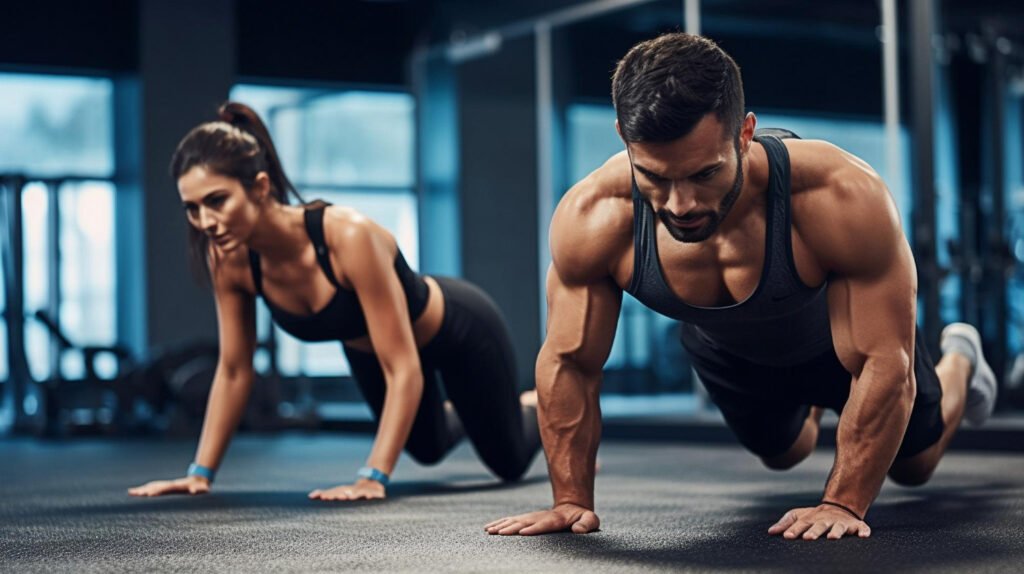
Incorporating daily home workouts offers numerous benefits for overall health, including improved cardiovascular fitness, increased muscle strength and flexibility. Plus, it’s convenient and accessible, saving you time and money in the long run.
Benefits for overall health
Regular home workouts lead to a stronger heart, reduced risk of chronic diseases like diabetes and hypertension, and can even help keep obesity at bay. Exercise boosts overall cardiovascular health, which means better blood flow throughout your body.
This keeps your heart strong and more efficient at pumping blood, which lowers the pressure on your arteries, reducing the risk of heart-related issues.
Exercising daily reinforces muscle strength and bone density, making you less susceptible to injuries and conditions such as osteoporosis. It sharpens your balance and flexibility, ensuring that everyday tasks become easier and safer to perform.
Building physical strength also improves posture while protecting your lower back from strain. With these exercises enhancing core stability and promoting deep breathing, they contribute positively not only to physical well-being but also mental clarity—a crucial factor for maintaining a healthy lifestyle that often goes overlooked.
Next up: how doing these routines saves time in your busy day!
Convenience and accessibility
Convenience and accessibility make daily home workouts a no-brainer for busy individuals. With exercises you can do right in your living room, there’s no need to travel or fit into the schedule of a fitness center.
You get to decide when to start and how hard to push yourself, which is perfect for those with irregular hours or family commitments. From squats that work your glutes and thighs to push-ups that engage chest and upper arms muscles, you can mix and match activities based on what you have at hand—no special equipment required.
Being able to exercise at home also means you’re more likely to stick with a routine. There’s something empowering about having complete control over your workout environment. Whether it’s early morning lunges in pajamas or crunches during TV time, fitting in fitness becomes simpler than ever.
And if space is tight? Many exercises like high knees or step-outs don’t even require more than a few feet of space, ensuring everyone can create their personal gym right where they are.
Saves time and money
Making the switch to daily home workouts not only boosts accessibility but also significantly cuts down on your expenses. Think about it: no gym membership fees, no travel costs to and from the fitness center, and no pricey boutique class charges.
Everything you need is right at home. You can do squats in your living room, push-ups against a kitchen chair or go for a jog outside— all without opening your wallet.
Staying fit with exercises like high knee double twists and celebratory knee drives means you are investing time wisely into short but effective sessions. This way, you sidestep long commutes or waiting for equipment at busy gyms.
Plus, by skipping drive times and using that period for a quick high-intensity interval training (HIIT) session instead, you’re saving precious minutes every day that add up over weeks and months.
Short bursts of strength training mixed with cardio exercise maximize health benefits while keeping both cost and time expenditure low.
The 7 Essential Exercises for a Daily Home Workout Routine

Incorporate these 7 essential exercises into your daily home workout routine for a full-body workout. These exercises target different muscle groups and can be easily done at home with minimal equipment.
1. Hands Hold Step-Outs
Hands Hold Step-Outs engage your core, glutes, and hip flexors. Stand with your feet shoulder-width apart. Hold a dumbbell in each hand at shoulder height. Then step out to the side while squatting down.
Push through your heels to return to the starting position and repeat on the other side.
Incidentally, Back Kick Heel Touches is another essential exercise for an effective home workout routine that targets multiple muscle groups simultaneously.
2. Back Kick Heel Touches
To do Back Kick Heel Touches, stand with feet hip-width apart. Lift your right leg behind you and touch your heel with your left hand, then return to starting position. Repeat on the opposite side.
This exercise targets the hamstrings, glutes, and lower back, improving strength and flexibility.
Incorporate this move into your daily home workout routine for a stronger lower body and improved balance. Next up is “Celebratory Knee Drives,” another essential exercise for a full-body workout session at home.
3. Celebratory Knee Drives
Engage your core and work on your balance with celebratory knee drives. Stand tall with your feet hip-width apart, then raise one knee up towards your chest while keeping the other leg grounded.
Alternate between knees to achieve a dynamic movement that targets the lower abs, hip flexors, and quads. This exercise also helps improve coordination and stability, making it an essential addition to your daily home workout routine.
Next in line – “Woodchoppers”.
4. Woodchoppers
The woodchopper exercise targets the core, shoulders, and obliques. Start by standing with your feet shoulder-width apart and holding a weight in both hands. Then, twist your torso to one side, bringing the weight towards your hip.
Next, engage your core as you lift the weight diagonally across your body and above the opposite shoulder. Ensure controlled movements to avoid strain or injury.
This exercise is an effective way to strengthen rotational movement patterns and improve overall stability in daily activities.
5. Double Diagonal Reach
Engage your core and improve rotational strength with the double diagonal reach. Begin in a standing position, feet shoulder-width apart, then lift one knee up while simultaneously reaching across your body to touch the outside of the raised knee.
Keep your abs engaged and return to the starting position before repeating on the other side for a full set.
Mastering this exercise will help enhance stability in your hips, engage your obliques, and improve balance. By incorporating this move into your daily workout routine, you can work on strengthening multiple muscle groups including the core, glutes, and lower limbs while also boosting flexibility throughout your torso.
6. Diagonal Lunge
Transitioning from the Double Diagonal Reach exercise, the Diagonal Lunge is a dynamic movement that engages multiple muscle groups simultaneously. This exercise targets the quadriceps, hamstrings, glutes, and calves while also challenging your balance and stability.
To perform a diagonal lunge, step forward at a 45-degree angle with one leg while maintaining a straight back and keeping your front knee aligned with your ankle. Lower your body until both knees are bent at 90-degree angles, then push off your front heel to return to starting position.
Incorporating this exercise into your daily home workout routine will help improve lower body strength and overall functional fitness.
Executing sets of diagonal lunges will contribute to building strong leg muscles and enhancing lower body endurance. Including this move in your workout routine can aid in developing better balance as well as increasing flexibility in the hips and legs.
7. High Knee Double Twist
Engage your abdominal muscles while standing straight. Lift your right knee towards the left side of your body and twist your torso to bring your left elbow towards the lifted knee.
Alternate with the opposite knee and elbow in a dynamic twisting motion, keeping a quick pace to elevate heart rate.
How to Properly Perform Each Exercise

Mastering the proper form and technique of each exercise is crucial to prevent injury and maximize results. It’s important to focus on recommended sets and reps, as well as modifications for beginners and tips for increasing intensity.
Proper form and technique
Mastering proper form and technique is crucial for maximizing the benefits of each exercise. Maintain a neutral spine during hands hold step-outs to engage your core and lower body.
When doing back kick heel touches, keep your elbows wide and press through your heels to activate your glutes effectively. For celebratory knee drives, focus on driving your knees up high with control for an intense workout.
During woodchoppers, rotate through the torso while keeping the hips stable to strengthen the obliques and core muscles.
When performing double diagonal reach, hinge at the hips with a slight bend in the knees for a full-body stretch. For diagonal lunges, ensure that you maintain a proper squat position by bending both knees at 90-degree angles without allowing one knee to extend past the toes.
Recommended Sets And Reps
Perform each exercise for 3 sets with 10-12 repetitions.
Modifications for beginners
If you’re new to working out, it’s essential to start with exercises suitable for beginners. Here are some modifications to consider:
- Hands Hold Step-Outs: Begin with a smaller range of motion, gradually increasing as your strength improves.
- Back Kick Heel Touches: Perform the movement at a slower pace to focus on control and balance.
- Celebratory Knee Drives: Start with a lower knee drive height and increase as you gain stability.
- Woodchoppers: Use lighter weight or resistance bands until you feel comfortable with the movement.
- Double Diagonal Reach: Reduce the range of motion initially, then progress to a fuller extension.
- Diagonal Lunge: Initiate with shallow lunges, then work towards deeper lunges as flexibility improves.
- High Knee Double Twist: Slow down the twisting motion and gradually pick up the pace as you build endurance.
Tips for increasing intensity
To increase the intensity of your daily home workout routine, consider the following tips:
- Add more repetitions or sets to your exercises to challenge your muscles further.
- Increase the resistance by using heavier weights or resistance bands for strength training exercises.
- Decrease rest time between sets to keep your heart rate elevated and improve cardiovascular endurance.
- Incorporate explosive movements like jumping squats or plyometric push-ups for a higher level of exertion.
- Focus on slowing down the eccentric (lowering) phase of each exercise to intensify muscle engagement.
- Engage in high – intensity interval training (HIIT) by alternating short bursts of intense activity with brief recovery periods.
- Progressively advance to more challenging variations of each exercise as you build strength and stamina.
Tips for Maintaining a Successful Daily Workout Routine

– Start slow and gradually increase intensity, listen to your body, mix up your routine, set achievable goals, and stay motivated and consistent. For more helpful tips on maintaining a successful daily workout routine, keep reading!
Start slow and gradually increase intensity
Begin with low-impact exercises, such as walking or gentle stretching, and then progress to more challenging movements over time. As you build strength and endurance, increase the duration or intensity of your workout sessions.
Gradually adding resistance, like using weights or resistance bands, can help you continue to push yourself as your fitness improves. By starting at a manageable pace and making incremental adjustments, you can avoid injury and steadily advance towards achieving your fitness goals.
As you get stronger and more comfortable with each exercise, consider adding more sets or reps to challenge yourself further. Additionally, incorporating higher-intensity interval training (HIIT) workouts into your routine is an effective way to boost cardiovascular endurance and overall fitness levels.
Listen to your body
Pay attention to how your body feels during and after each workout. If you experience sharp pain or extreme discomfort, stop the exercise immediately. Adjust your movements if you feel strain or tension in your muscles.
Take breaks when needed, and don’t push yourself too hard. It’s important to recognize the difference between muscle fatigue and actual pain. Give yourself permission to rest and recover, as pushing through discomfort can lead to injury.
Remember that everyone’s fitness level is different, so listen to what your body is telling you while exercising. If something doesn’t feel right, modify the movement or seek professional advice if necessary.
Mix up your routine
To keep your workouts interesting and prevent boredom, mix up your routine by incorporating different exercises each day. This variety not only challenges your body in new ways but also prevents overuse injuries.
Try adding new movements, modifying the order of exercises, or changing up the equipment you use. By keeping things fresh, you’ll stay engaged and motivated to stick with your daily home workout routine.
Set achievable goals
When setting achievable goals for your daily home workout routine, tailor them to your fitness level and schedule. Be specific about what you want to accomplish, whether it’s increasing the number of reps or working out a certain number of days per week.
To stay motivated, track your progress and celebrate small milestones along the way.
Once you have set achievable goals, create a plan that outlines how you will reach them. This can help you stay organized and focused on your workout routine. By establishing realistic and attainable benchmarks, you can continuously push yourself to improve while avoiding burnout.
Stay motivated and consistent
To keep up your daily home workout routine, staying motivated and consistent is key. Set achievable goals, listen to your body, and mix up your exercise routine to avoid getting bored.
It’s important to start slow and gradually increase intensity over time. Remember to set achievable goals that align with your fitness level and lifestyle. A variety of exercises will help you stay engaged and make progress towards a fitter, healthier you.
How long to wait for workout results
To see workout results, stay consistent with your routine and exercises. It usually takes around four to six weeks to notice physical changes, such as increased muscle tone or weight loss progress.
However, improvements in mood and energy levels can be observed within just a few workouts.
By focusing on proper form and gradually increasing intensity, you’ll maximize your efforts and start seeing results sooner rather than later. Consistency is key; keep pushing yourself while listening to your body’s limits for optimal performance.
Conclusion

Incorporating these 7 essential exercises into your daily home workout routine can lead to significant improvements in overall health and fitness. Their practicality and efficiency make them easy to implement, ensuring you stay on track with your fitness goals.
How will you incorporate these exercises into your daily routine? Take action today and experience the impact for yourself. Remember to stay motivated and consistent, as maintaining a successful workout routine is key to seeing results.
Whether it’s through increased strength, improved endurance, or enhanced physique, the benefits are within reach.
FAQs
1. What are some exercises I can do daily at home to strengthen my body?
To build strength, try push-ups for your chest and arms, pull-ups to work on your biceps and lats, squats for your legs and glute muscles, deadlifts for a full-body workout, chin-ups for grip strength and upper body power, and pilates or similar calisthenics to target the core.
2. Can doing exercises like squats help with my overall health?
Yes! Doing deep squats not only tones your buttocks but is also an excellent aerobic workout that helps reduce cardiovascular disease risk by keeping blood pressure in check.
3. How long should I cycle each day as part of my exercise routine?
Including cycling in your routine is great for fitness; riding a stationary bike for 20-30 minutes can be effective if it’s done consistently as part of an aerobic workout.
4. Do home workouts require any special equipment like at the fitness center?
Most home workouts don’t need special gear – exercises like pushups, sit ups, jogging on the spot or using rolled-up towels instead of heavy weights can all contribute to getting fit without equipment.
5. Is swimming a good exercise option when I’m unable to go outdoors?
Swimming is fantastic but might not always be available at home; instead you could simulate swimming movements or do other aerobic activities that increase heart rate and strengthen breath control.
6. What kind of exercise should I focus on if I want six-pack abs?
Focusing on abdominal-specific movements like plank holds will target rectus abdominis muscles which help achieve those desired six-pack abs alongside regular cardio exercises.

Author
Years ago, the spark of my life’s passion ignited in my mind the moment I stepped into the local gym for the first time. The inaugural bead of perspiration, the initial endeavor, the very first surge of endorphins, and a sense of pride that washed over me post-workout marked the beginning of my deep-seated interest in strength sports, fitness, and sports nutrition. This very curiosity blossomed rapidly into a profound fascination, propelling me to earn a Master’s degree in Physical Education from the Academy of Physical Education in Krakow, followed by a Sports Manager diploma from the Jagiellonian University. My journey of growth led me to gain more specialized qualifications, such as being a certified personal trainer with a focus on sports dietetics, a lifeguard, and an instructor for wellness and corrective gymnastics. Theoretical knowledge paired seamlessly with practical experience, reinforcing my belief that the transformation of individuals under my guidance was also a reflection of my personal growth. This belief holds true even today. Each day, I strive to push the boundaries and explore new realms. These realms gently elevate me to greater heights. The unique combination of passion for my field and the continuous quest for growth fuels my drive to break new ground.







